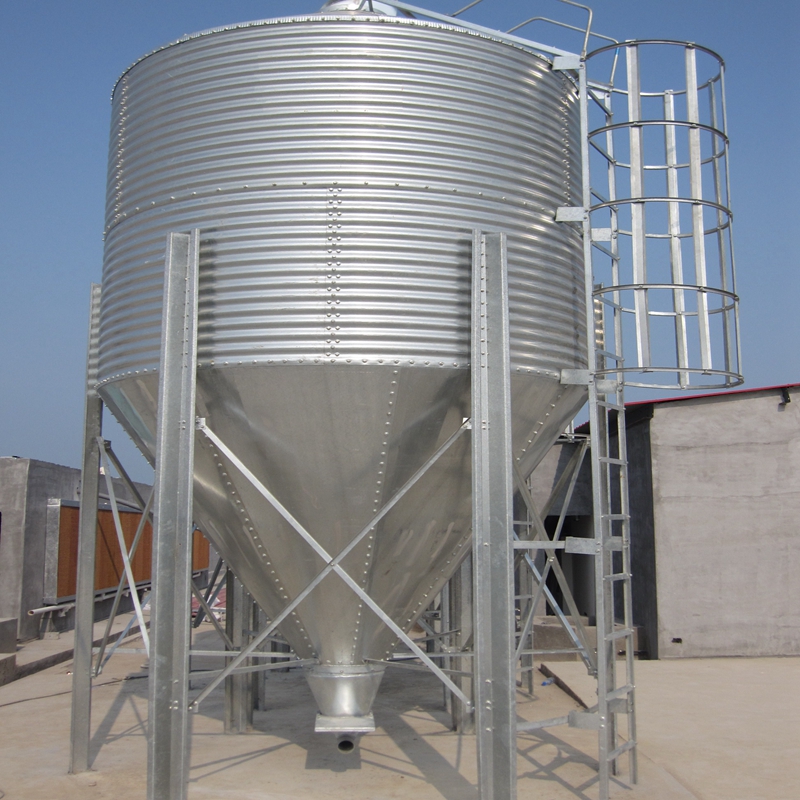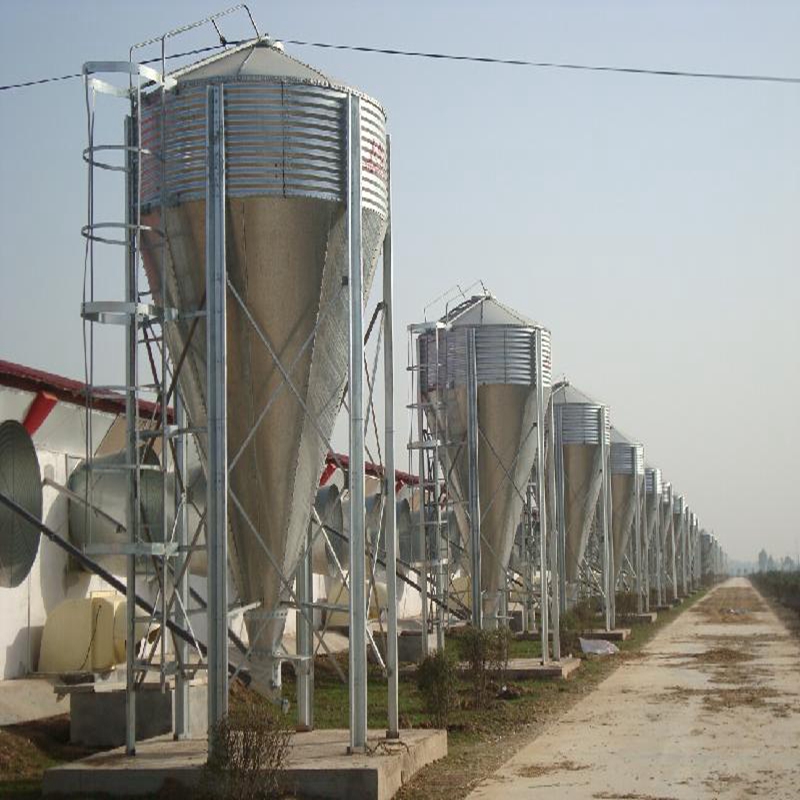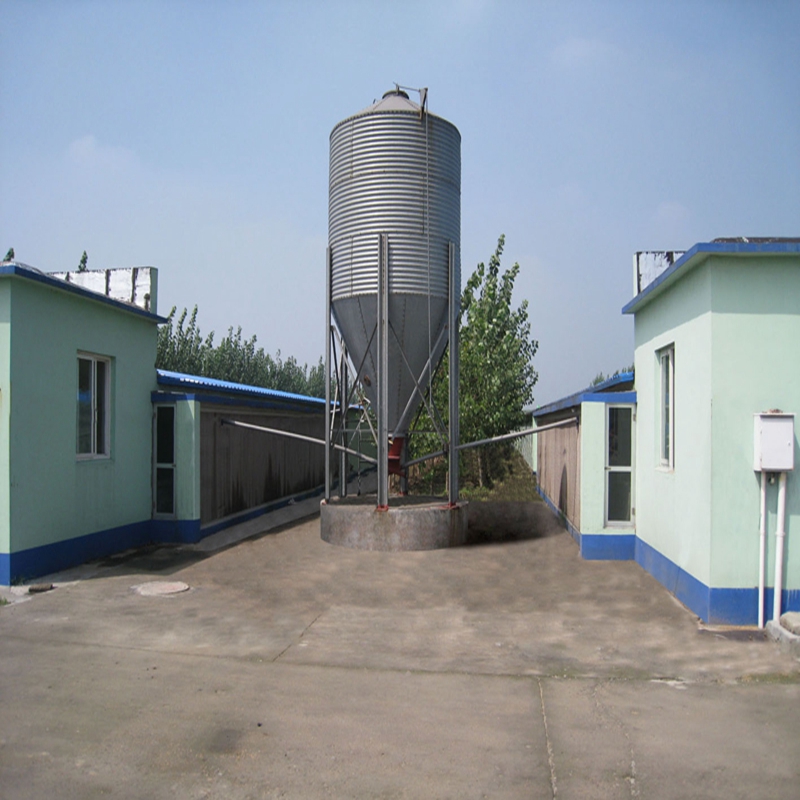Need a silo automatico that boosts accuracy and capacity?
Oct . 08, 2025 22:35 Back to list
Need a silo automatico that boosts accuracy and capacity?
Practical Guide to Modern Feed Silos: What Matters, What Doesn’t
If you’re weighing options for a silo automatico in a poultry operation, you’ve probably noticed the market has gone from “steel is steel” to a surprisingly sophisticated set of choices. To be honest, that’s a good thing. Feed integrity, automation, and safety standards now drive design—less guesswork, more data.

Product snapshot
The Feed Silo Metal Silo Galvanised Feed Tower For Poultry House comes out of Jinwang Western Street, Industrial Zone, Anping County, Hengshui, Hebei, China—an area that, frankly, has become a steel-processing hub. The cone-bottom design means gravity discharge, self-cleaning, and minimal residue. Many customers say that alone saves them a surprising amount of labor and feed waste.
| Model | Galvanised Feed Tower (Hopper Bottom) |
| Capacity range | ≈ 5–60 m³ (real-world use may vary by density and moisture) |
| Material | Galvanized steel (typ. Z275–Z350 g/m²); Q235/Q345 structural frames |
| Finish | Hot-dip galvanizing; corrosion class ≈ C3–C4 environments |
| Discharge | Cone-bottom with gravity feed; optional auger/spiral conveyors |
| Use cases | Poultry feed, seed, flour, aquaculture pellets, chemicals (dry) |
| Origin | Jinwang Western Street, Anping County, Hengshui, Hebei, China |

Process flow and automation
- Materials: galvanized sheet profiling, ribbed panels, high-strength bolts, food-grade sealants.
- Methods: CNC punching/rolling; EN 1090-welded frames; hot-dip galvanizing per GB/T 13912.
- Build: hopper cone, ring stiffeners, ladder/catwalk, roof vents, level sensors, access hatches.
- Automation: load cells, IoT level transmitters, anti-bridging vibrators, timed auger dosing.
- Testing: panel coating mass (μm), salt-spray tests (≥ 480 h typical), bolt torque checks, leak tests.
- Service life: ≈ 15–25 years depending on coastal/corrosive exposure and maintenance.
- Standards: ISO 9001 QA, EN 1991-4 (silo loads), EN 1090 (structural), ATEX options for dust zones.
Where do these shine? Poultry houses (obviously), but also feed mills, seed depots, and small chemical processors needing clean, fast discharge. A silo automatico with a cone bottom tends to minimize bridging, which—if you’ve ever dug out clumped feed at 5 a.m.—you know is worth its weight in coffee.
Vendor comparison (quick take)
| Vendor | Core Strength | Typical Coating | Notes |
|---|---|---|---|
| Yize (this model) | Robust cone-bottom; good self-cleaning | Z275–Z350 | Solid value; broad capacity range |
| Vendor B | Premium sensors, EU service network | Z350+ | Higher price; fast spare parts |
| Vendor C | Lightweight panels, quick install | Z275 | Best for inland, dry climates |

Field data, feedback, and customization
In one 25,000-bird poultry house, average discharge rate hit ≈ 12 t/h via 45° cone with a 102 mm auger; bridging incidents dropped to near-zero after adding a small vibrator. Moisture at 12–13% kept flow consistent. A silo automatico setup with load cells gave daily feed inventory variance of ±2.5% (good enough for most farm managers).
Options to ask for: higher zinc mass if you’re near the coast, extended roof venting for humid summers, ATEX-rated components in dusty mills, and remote telemetry. Many customers say the remote level alerts are the feature they now can’t live without.

Why it matters now
Feed quality swings are expensive. Properly sealed seams, compliant load design, and traceable QA (ISO 9001) keep spoilage and downtime low. And yes, a silo automatico won’t fix poor feed handling, but it does remove a lot of variables.
Citations
- EN 1991-4: Eurocode 1 – Actions on structures – Silos and tanks. https://eurocodes.jrc.ec.europa.eu
- EN 1090-1: CE Marking of steel structures. https://standards.cen.eu
- GB/T 13912: Hot-dip galvanized coatings. http://www.std.gov.cn (CN)
- ISO 9001:2015 Quality Management Systems. https://www.iso.org/standard/62085.html
- FAO. Storage and handling of grains. https://www.fao.org/3/y1390e/y1390e.pdf
-
Efficient & Sustainable Chick Brooding Cage Systems for Modern Poultry Farming
NewsNov.24,2025
-
Cage for Chick: Optimizing Poultry Care for Global Food Security
NewsNov.23,2025
-
Baby Chicks Cage – Global Solutions for Sustainable Poultry Farming
NewsNov.22,2025
-
Baby Chick Cage: The Essential Guide to Brooding Solutions for Poultry Farmers
NewsNov.22,2025
-
Understanding Square Grain Silos: Global Impact, Benefits, and Trends
NewsNov.21,2025
-
Automatic Feeding Line System-Anping County Yize Metal Products Co., Ltd.|Automated Feeding&Watering
NewsNov.21,2025






